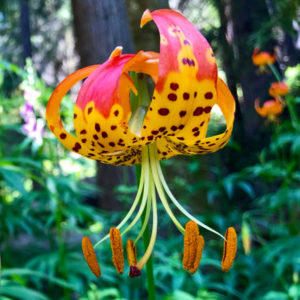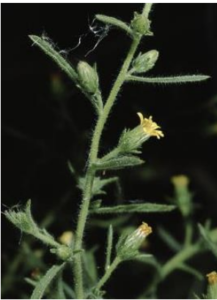Hidden in Plain Site: Openlands are Wildlife Habitat
Did you know that nearly half of the special resources on The Preserve reside in the protective hands of our landowners? One of the brilliant, and yet often uncelebrated, design elements of The Preserve is the fact that each landowner is a vested partner in protecting the things we care about such as majestic views, coastal prairies, streams, ponds, archeological sites and exceptional wildlife habitat.
“Exceptional wildlife habitat” might not be how most Preserve landowners previously described their properties but the introduction of wildlife cameras in the Openlands changed all that. It all started in the fall of 2014 with a Citizen Science project in which Preserve members, like Ramona Bohlander pictured above, partnered with the Conservancy to document wildlife that used their Openlands compared to the surrounding Wildlands.
 Prior to the launch of the project it was no secret that The Preserve was home to an incredible diversity of wildlife including the iconic mountain lion, beloved bobcat, bouncing deer, strutting turkey and shy grey fox. However, seeing these species from inside your vehicle as you drive along Rancho San Carlos in the evening is different than catching a glimpse of them in your garden while they hunt your gophers at 2 a.m. The placement of cameras, just steps away from back patios, suddenly lifted the veil on the unguarded moments of our wildlife sleeping, lounging and wandering the land. Landowners suddenly owned more than acreage and spectacular views, they owned important wildlife habitat and corridors.
Prior to the launch of the project it was no secret that The Preserve was home to an incredible diversity of wildlife including the iconic mountain lion, beloved bobcat, bouncing deer, strutting turkey and shy grey fox. However, seeing these species from inside your vehicle as you drive along Rancho San Carlos in the evening is different than catching a glimpse of them in your garden while they hunt your gophers at 2 a.m. The placement of cameras, just steps away from back patios, suddenly lifted the veil on the unguarded moments of our wildlife sleeping, lounging and wandering the land. Landowners suddenly owned more than acreage and spectacular views, they owned important wildlife habitat and corridors.

The inspiration for the Where the Wildlife Wander project was not just helping owners learn about their backyard wildlife but to “test the model of The Preserve”. We wondered if wildlife would use the Openlands just like they use the Wildlands. We also wondered if the same collection of species would show up in Openlands as in Wildlands. As data poured in from the cameras spread across the larger Preserve landscape it quickly became apparent that the design was working. Even with homes integrated into their habitat, wildlife continued to use the Openlands and Wildlands in similar ways, reflecting the seamless flow of the land from Homeland to Openland to Wildland.
The confirmation of wildlife continuing to use the entire Preserve regardless of structures is a huge indicator of success for the thoughtful design of The Preserve. But the sudden connection, insight and pride experienced by the landowners was the greatest achievement of the project. These Preserve members were now Exceptional Wildlife Habitat Owners, a designation that anyone should be proud to brag about.
As the community continues to grow, and more homes fill in the neighborhoods, we look forward to the moments when members discover the land they live on is more than a sanctuary for them, it is a sanctuary for our wildlife as well. Just the way The Preserve was designed to work.
By Christy Wyckoff














